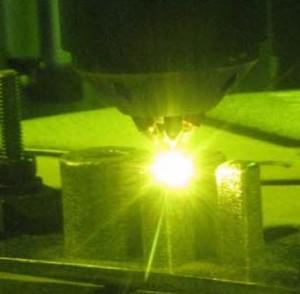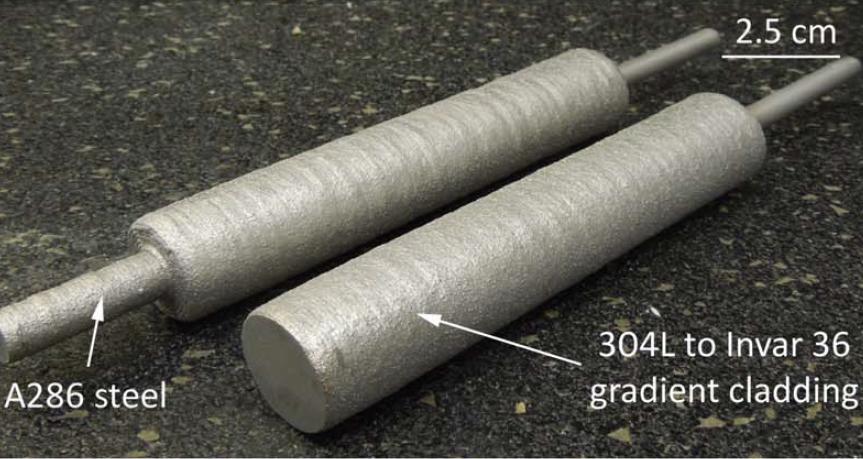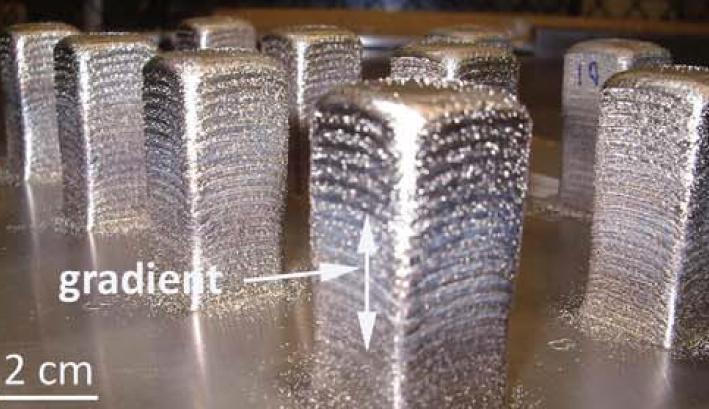It’s simply amazing how quickly additive manufacturing technology has been progressing. Just a few years ago, laser sintering of metals within the manufacturing industry was a process used by only a few companies,  mostly in a research capacity. Here we are in the middle of 2014 and numerous companies are using laser sintering additive manufacturing machines to print extremely important metal components for a variety of products, from airliners to race cars.
mostly in a research capacity. Here we are in the middle of 2014 and numerous companies are using laser sintering additive manufacturing machines to print extremely important metal components for a variety of products, from airliners to race cars.
In many cases, additive manufacturing of metal components is cheaper, and produces a sturdier, lighter product than traditional manufacturing techniques. Based on this alone, you would think that there would soon be widespread adoption of the technology from medium to large cap companies around the globe. That’s not all though. The future of the technology looks extremely bright, placing it leaps and bounds ahead of that of traditional methods, and enabling the manufacturing of parts which were nearly impossible just a couple of years ago.
A recent accomplishment by researchers at NASA’s Jet Propulsion Laboratory, the California Institute of Technology, Pasadena, and Pennsylvania State University, University Park, could have staggering implications for manufacturing in general, over the coming years. What they have managed to do, is figure out a way in which a part can be 3D printed out of several different metal alloys. For instance, a jet engine component could be printed in one piece with several different properties throughout. The area of the part which directly makes contact with a heat source, could consist of a metal alloy which can stand up to higher temperatures, while the opposite side of that part could consist of a metal with less temperature resistance, but be lighter, stronger and less dense, to cut back on weight.
“You can have a continuous transition from alloy to alloy to alloy, and you can study a wide range of potential alloys,” said R. Peter Dillon, a technologist at JPL. “We think it’s going to change materials research in the future.”
The actual printing process is foreign to anything we have seen in the past. Instead of depositing metal or sintering a bed of metal powder layer-by-layer, like other additive manufacturing methods, the researchers created a printer which deposited the metal via a sintering technique on a rotating rod, meaning that the inside of a part could consist of a different metal alloy than the outside, or there could even be several different metals within a part. The actual head of the printer features 4 powder blowers, allowing for multiple metals to be melted via a laser, without the need to change out the metal type, making the process a smooth and uninterrupted one.
“We’re taking a standard 3-D printing process and combining the ability to change the metal powder that the part is being built with on the fly,” said Douglas Hofmann, a researcher in material science and metallurgy at JPL, and visiting associate at Caltech. “You can constantly be changing the composition of the material.”
The implications of this research could have a far reaching impact on the manufacturing industry, allowing for the combination of multiple metal materials with multiple properties, all printed in one piece, without the need for welding, screws, or bolts. This could be one of the more important pieces of research within the additive manufacturing space this year.
Let us know your thoughts on this incredible new process of 3D printing in the multiple metal additive manufacturing forum thread on 3DPB.com.
[Source: CalTech.edu]Subscribe to Our Email Newsletter
Stay up-to-date on all the latest news from the 3D printing industry and receive information and offers from third party vendors.
You May Also Like
Gorilla Sports GE’s First 3D Printed Titanium Cast
How do you help a gorilla with a broken arm? Sounds like the start of a bad joke a zookeeper might tell, but it’s an actual dilemma recently faced by...
Nylon 3D Printed Parts Made More Functional with Coatings & Colors
Parts 3D printed from polyamide (PA, Nylon) 12 using powder bed fusion (PBF) are a mainstay in the additive manufacturing (AM) industry. While post-finishing processes have improved the porosity of...
$25M to Back Sintavia’s Largest Expansion of Metal 3D Printing Capacity Since 2019
Sintavia, the digital manufacturing company specializing in mission-critical parts for strategic sectors, announced a $25 million investment to increase its production capacity, the largest expansion to its operations since 2019....
Velo3D Initiates Public Offering in a Bid to Strengthen Financial Foundations and Drive Future Growth
Velo3D (NYSE: VLD) has been among a number of publicly traded 3D printing firms that have attempted to weather the current macroeconomic climate. After posting a challenging financial report for 2023,...


































